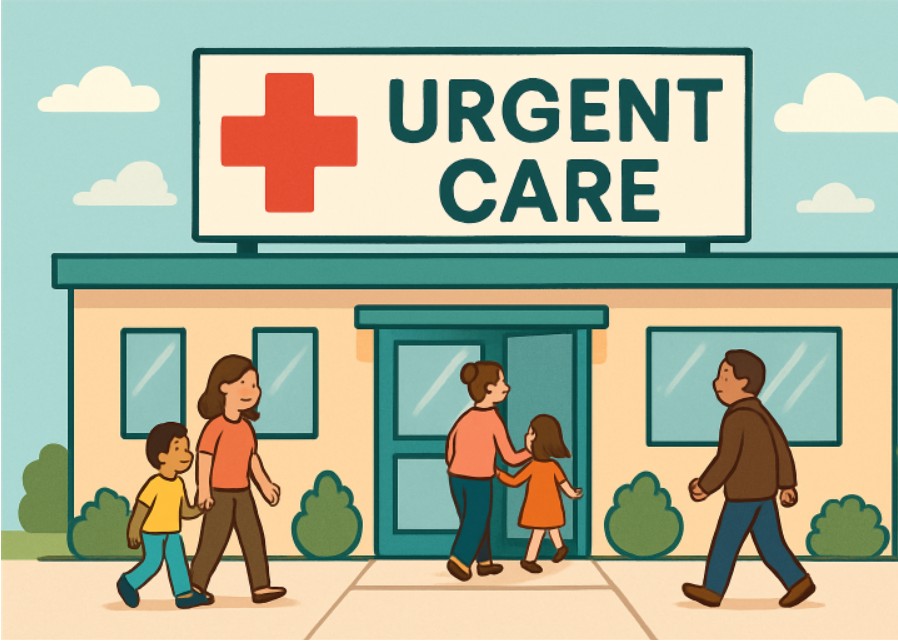Understanding Urgent Care Services
Urgent care centers are designed for quick and convenient medical help when dealing with conditions that need prompt attention but aren’t emergencies. This can include anything from minor injuries and infections to mild asthma, sprains, and fevers. These centers bridge the gap between your family doctor and the emergency room, offering expertise and diagnostic testing right when needed.
For many families, locating quality care outside typical office hours is crucial. In these situations, searching for the best family doctor near me can help you find a provider who balances personal care with urgent attention, making urgent care a flexible choice for adults and children.
Preparing for Your Visit
Before you head to an urgent care clinic, a little preparation can help ensure a smooth visit. Gather your insurance card, a photo ID, and a current list of medications and allergies. Knowing your or your child’s medical history—including chronic conditions, previous surgeries, and significant health events—will ensure the healthcare team can make the best decisions for your care.
Double-check the clinic’s hours so you arrive when they are open, and see if they offer online check-in to minimize your wait time. If you need guidance on choosing a qualified center or are establishing ongoing care, searching for a trusted primary provider is a smart, proactive step.
Upon Arrival: The Check-In Process
Most urgent care centers accept walk-ins and aim to get you registered and seen quickly. At reception, you’ll complete a registration form that covers personal details, medical background, and your primary reason for the visit. Many clinics have digital check-in options—an especially helpful time-saver if you’re feeling unwell or visiting with children.
Consultation and Examination
Once checked in, a nurse or physician will call you into an exam room. Typical steps in the consultation include taking your vital signs—temperature, blood pressure, heart rate, and oxygen levels—reviewing your medical history, and discussing your current symptoms in detail. The healthcare provider may conduct a focused physical exam of the affected area or ask clarifying questions to determine the optimal treatment plan.
Diagnostic Testing and Treatment
Many urgent care clinics are equipped to perform in-house diagnostic tests such as X-rays, blood draws, rapid strep or flu tests, and urinalysis. This means you often receive answers—and start on treatment—within the same visit. Common treatments include wound cleaning and bandaging, prescription medications, minor procedures (like laceration repair), splinting sprains, or administering injections.
Understanding Costs and Insurance
One advantage of urgent care is affordability compared to emergency rooms. Still, costs can vary based on services and your insurance. Before your visit, confirm that the center accepts your health plan and ask about potential copays or out-of-pocket expenses. If you don’t have insurance, many urgent care clinics offer up-front pricing or self-pay options to make receiving care less stressful financially. According to Healthline’s guide to urgent care costs, many clinics will display prices for common procedures to help patients feel more prepared.
Aftercare and Follow-Up
Before leaving the urgent care center, you’ll be given tailored aftercare directions—these may include taking prescribed medications, changing bandages, monitoring for concerning symptoms, or scheduling a follow-up appointment, especially if you need chronic care management or further testing. Carefully following these instructions will help speed up your recovery. Sometimes, the clinic may refer you to your primary care physician or a specialist for further evaluation.
When to Choose Urgent Care Over the Emergency Room
Urgent care is best for situations that are not critical, such as mild asthma attacks, strains, minor fractures, ear infections, coughs, or small cuts. However, always opt for the emergency room if you have chest pain, severe bleeding, breathing difficulties, head injury, sudden confusion, or other symptoms of a major health emergency.
